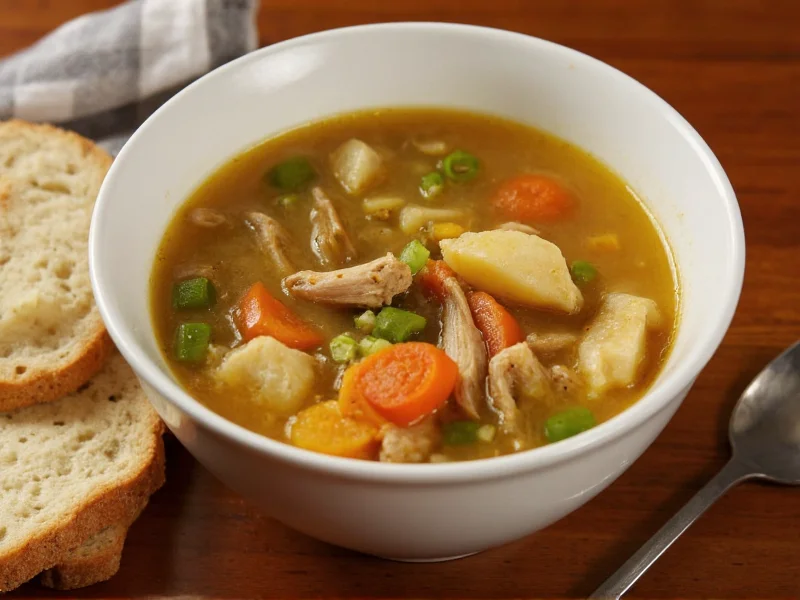For over 50 years, Campbell's chicken soup products have been pantry staples in American households. The iconic red and white label represents one of the most recognizable food products globally, with Campbell's Chicken Noodle Soup leading the category since its 1969 debut. This comprehensive guide examines the various Campbell's chicken soup offerings, their ingredients, nutritional profiles, and how they compare to homemade alternatives.
History of Campbell's Chicken Soup
The Campbell Soup Company introduced its first chicken soup product in the early 20th century, but it was the 1969 launch of Campbell's Chicken Noodle Soup that revolutionized the category. This innovation combined chicken broth, egg noodles, and chicken pieces in a convenient condensed format that required adding water before heating. The product's success stemmed from its consistent flavor, long shelf life, and ease of preparation during a time when more women entered the workforce and sought time-saving meal solutions.
Popular Campbell's Chicken Soup Varieties
Today, Campbell's offers multiple chicken soup varieties to accommodate different dietary preferences and cooking needs:
- Condensed Chicken Noodle Soup - The classic version requiring water dilution
- Ready-to-Serve Chicken Noodle Soup - Pre-diluted for immediate consumption
- Healthy Request Chicken Noodle Soup - Reduced sodium formulation
- Chunky Chicken Noodle Soup - With larger chicken and vegetable pieces
- Well Yes! Chicken Noodle Soup - Made with recognizable ingredients
- Organic Chicken Noodle Soup - USDA certified organic ingredients
Nutritional Profile of Campbell's Chicken Soups
Nutritional content varies significantly across Campbell's chicken soup product lines. The traditional condensed version contains higher sodium levels than newer formulations designed for health-conscious consumers.
| Variety | Calories (per serving) | Sodium (mg) | Protein (g) | Key Differentiators |
|---|---|---|---|---|
| Traditional Condensed | 70 | 890 | 4 | Classic recipe, requires water dilution |
| Healthy Request | 60 | 480 | 5 | 50% less sodium than regular version |
| Well Yes! Chicken Noodle | 110 | 470 | 6 | No artificial ingredients, whole grain noodles |
| Organic Chicken Noodle | 80 | 530 | 4 | USDA organic certified, no GMOs |
Campbell's Chicken Soup vs. Homemade Versions
Many consumers wonder how Campbell's chicken soup compares to homemade versions. While convenient, canned soups generally contain more sodium and preservatives than homemade alternatives. A typical homemade chicken noodle soup made with fresh ingredients contains approximately 30% less sodium than regular Campbell's condensed soup.
The texture difference is notable as well—canned soups maintain consistent texture during shelf life, while homemade versions may have softer vegetables and noodles after storage. Campbell's achieves its signature consistency through modified food starch and precise processing techniques that prevent ingredient separation.
Common Culinary Uses Beyond Soup
Campbell's chicken soup serves as a versatile cooking ingredient beyond being consumed as a standalone soup. Many home cooks and professional chefs use it as:
- A base for casseroles and pot pies
- A flavor enhancer for rice and grain dishes
- A convenient broth substitute in recipes
- A component in creamy sauces and gravies
- A poaching liquid for chicken and vegetables
The condensed format works particularly well in recipes requiring reduction, as the concentrated flavors intensify during cooking. When substituting Campbell's condensed chicken soup in recipes calling for broth, use a 1:1 ratio without additional water.
Storage and Shelf Life Information
Proper storage significantly impacts the quality and safety of Campbell's chicken soup products. Unopened cans maintain best quality for 2-3 years when stored in a cool, dry place away from direct sunlight. Once opened, transfer unused portions to an airtight container and refrigerate for up to 3-4 days.
Do not store opened soup in the original can, as metal can leach into the product over time. For longer storage, freeze portions in freezer-safe containers for up to 2 months. When checking for spoilage, look for bulging cans, off odors, or unusual discoloration before consumption.
Understanding Campbell's Soup Labeling
Campbell's uses specific terminology on their chicken soup labels that consumers should understand:
- Condensed - Requires dilution with water (typically 1 can soup + 1 can water)
- Ready-to-Serve - Formulated for direct consumption without dilution
- Healthy Request - Contains at least 50% less sodium than regular versions
- Well Yes! - Features recognizable ingredients with no artificial additives
- Organic - Made with ingredients meeting USDA organic standards
The ingredient list on Campbell's chicken soup has evolved over time in response to consumer preferences. Recent formulations have reduced or eliminated artificial flavors, modified the starch system, and introduced whole grain noodles in certain product lines.











 浙公网安备
33010002000092号
浙公网安备
33010002000092号 浙B2-20120091-4
浙B2-20120091-4